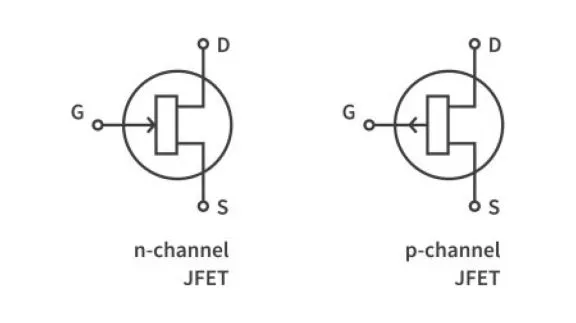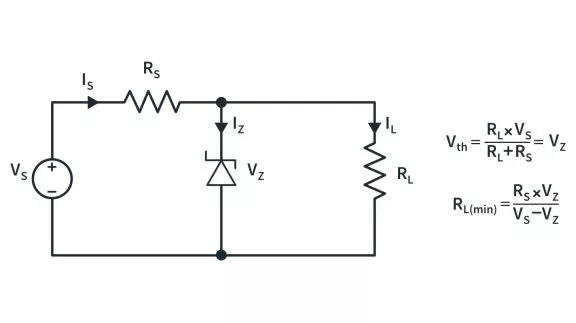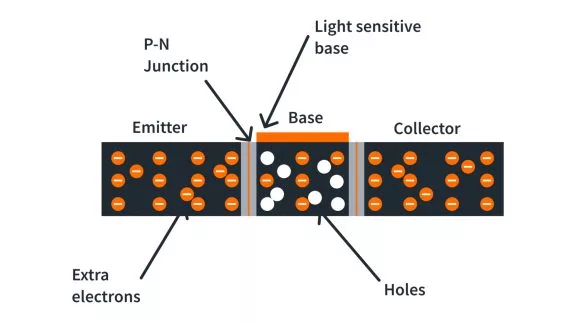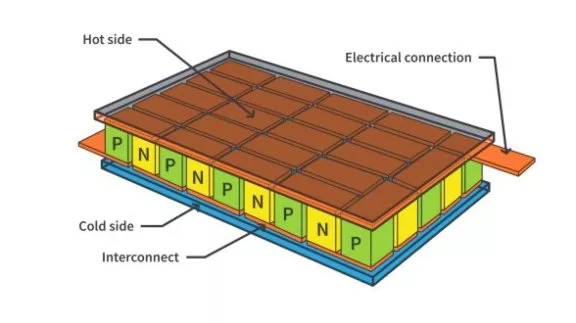A flyback diode is a diode connected across an inductor. It has a reverse polarity from the power supply and is used to eliminate flyback. It is used in circuits in which inductive loads are controlled by switches, and in switching power supplies and inverters. This diode also has many other names, such as snubber diode, commutating diode, freewheeling diode, suppressor diode, clamp diode, or catch diode.
Voltage spikes are fast, short-duration electrical transients in voltage in an electrical circuit. Flyback occurs when there is an abrupt voltage spike across the inductive load when the supply current is abruptly reduced or interrupted. Flyback occurs due to electromagnetic induction. Just as capacitors resist changes in voltage drop by drawing current from or supplying current to the source of the voltage change, inductors oppose changes in the current passing through them by inducing a voltage that is proportional to the rate of the current change. Opening the switch in figure 1 collapses the magnetic field in the inductor, but this process takes time as the inductor resists the sudden drop of current.

A changing magnetic field through a coil of wire will induce an emf in the coil which in turn causes current to flow, even after the switch is opened. Just as it takes time to store energy in an inductor, it also takes time to expend this energy. Therefore, the inductor must dissipate this current at a rate according to its time constant. An inductor's time constant limits how fast the current can change, given by τ = L/R, where L is the inductance in Henry and R is the resistance present in the circuit. In this case, we care about how fast the current dissipates once the inductor has been disconnected.

As shown in figure 2, it will take τ for the current to decrease from 99% to 37%. To go from 99% to 13.5%, it will take 2τ. Overall, it will take a total of about 5τ for the current flow to completely stop once the switch has been opened. Disconnecting the switch creates a sudden change in magnetic flux through the inductor which in turn induces a voltage across the inductor as it tries to dissipate current according to its dissipation curve.
From the moment the switch is opened, the inductor sees the open switch gap as a very large resistor (~MΩ), closing the circuit for the current to flow. The inductor will then try to dissipate the current, dropping voltage across the air gap resistance by reversing its polarity and acting as a source by using its own energy in the form of a stored magnetic field. Considering Ohm’s Law, multiplying even the tiniest current by the large resistance will result in a huge voltage. In order to achieve this large voltage drop, the inductor will use the remainder of its stored energy to create a very large negative potential on one side of the gap resistor. The inductor does this so that current will flow according to the dissipation curve, ultimately causing the flyback voltage spike.

As there is no physical resistor where the switch is opened, sparks/arcs will occur between the switch and the other terminal, where there is a large potential difference. All the energy from the arc is usually discharged across the contacts of the switch in the form of heat. This could potentially damage permanently or drastically reduce the lifetime of the switches. These switching devices can be mechanical switches or semiconductor switches like transistors. Simply put, flyback voltage can cause electrical noise and damage to other components in the circuit.
To prevent large voltage spikes, the flyback diode is connected across the inductor with reverse polarity to the power supply. When the supply is connected, the diode will be reverse-biased and won’t exist in the circuit. When the supply is disconnected, the voltage polarity of the inductor is inverted, and a current loop forms between the inductor and the diode; the diode becomes forward biased.

The diode reroutes the current with minimal resistance and prevents flyback voltage from building up, hence the name flyback diode. The flyback diode does not prevent a voltage spike from traveling to some downstream load. Instead, it provides a path with low resistance that reroutes the current so that the voltage spike at the downstream load will be much lower. The flyback diode will make the inductor draw current from itself in a form of a loop until the whole energy is dissipated in the wires and the diode.














